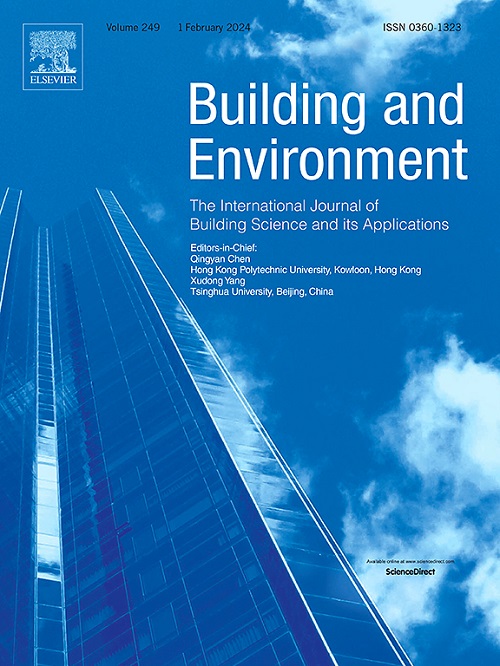Mitigating impacts of hot weather on outdoor workers by attaching phase change materials based on body mapping of physiology
IF 7.1
1区 工程技术
Q1 CONSTRUCTION & BUILDING TECHNOLOGY
引用次数: 0
Abstract
To effectively mitigate impacts of hot weather on outdoor workers and improve their thermal comfort and work efficiency, a novel cooling vest (CV) with phase change material (PCM) was developed. The originality of this CV lies in the distribution of PCM packages which are totally based on body mapping of thermal sensation and perspiration. Human tests were performed in a climate chamber simulating hot outdoor environment (35 °C, 55 %RH) to evaluate thermal and movement comfort of workers wearing this CV. The results showed that skin temperature (Tsk) of each localized area was significantly (p < 0.05) reduced by 3.90–9.00 °C compared to that without CV. Besides, a great advancement compared to previous research is the cooling effect could last for the entire 2 h. Subjective thermal sensation was improved from hot (+3) to slightly warm (+1). Pearson correlation analysis revealed Tsk of back and scapula had the strongest correlation (p < 0.01, r > 0.8) with local and overall thermal sensation vote (TSV), indicating cooling these two body parts would achieve a more certain decreased TSV compared to cooling other body parts. Meanwhile, the self-perceived level of fatigue by subjects was lowered because of the improved thermal comfort. This newly developed CV managed to effectively improve both the thermal comfort and work efficiency of outdoor workers without adding extra load. This study provides new technology with physiological and ergonomic basis for creating thermally comfortable near-body environment for workers who have to be exposed to hot environment.
求助全文
约1分钟内获得全文
求助全文
来源期刊

Building and Environment
工程技术-工程:环境
CiteScore
12.50
自引率
23.00%
发文量
1130
审稿时长
27 days
期刊介绍:
Building and Environment, an international journal, is dedicated to publishing original research papers, comprehensive review articles, editorials, and short communications in the fields of building science, urban physics, and human interaction with the indoor and outdoor built environment. The journal emphasizes innovative technologies and knowledge verified through measurement and analysis. It covers environmental performance across various spatial scales, from cities and communities to buildings and systems, fostering collaborative, multi-disciplinary research with broader significance.
 求助内容:
求助内容: 应助结果提醒方式:
应助结果提醒方式:


